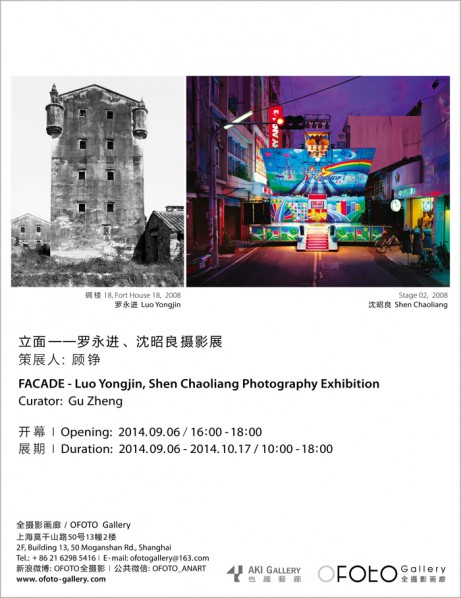
As the Facade of History and Cultural Expressions
By Gu Zheng
Facade (Façade) is an architectural term, which mainly refers to the front of a building. To meet the needs of living functions, architectural aesthetics, political and economic status of the owner, etc, the designer needs to turn the façade into a planar space qualified for various requirements such as ideology, aesthetic taste and function, etc.
In this sense, Facade is not only required by a practical functional requirement but also by an aesthetic pursuit. The owner and designer hope the public can understand the idea and value that they pursue and want to express at the first contact with the building. And the Facade on the other hand provides eye contact in space to move and influence the audience by details and the whole.
This exhibition shows the works of two photographers Shen Chaoliang and Luo Yongjin. They both happen to start from the “Facade”, to watch, discover and reveal the front, as well as the culture, history and psychology behind.
Shen Chaoliang’s STAGE series shows the stage truck moving between urban and rural areas in Taiwan. His technique starts from the “Facade” in architecture (sometimes there is slight angle deviation, not the full front, which can be also seen in Luo Yongjin’s works). The front view of a stage truck in full swing is like a peacock in his pride giving the audience a full view to understand its features. In architecture, Facade may be always the first problem that a designer shall solve, because Facade is closely related with what people face, which part and direction architecture shall first affect people’s impression and the relationship between architecture and surroundings, which all involve the designer’s careful consideration. These stage trucks also have requirements in the Facade design. As a kind of performance stage, the front effect must be visually striking. Therefore, they are the best visual performance space to reflect the designer’s imagination and creativity. From such a small cultural complex, the “Facade” of stage truck best grasp the essence of Taiwan’s culture. Shen Chaoliang’s style of color and large format is more conductive to release the rich cultural details of the stage trucks, which fully presents the exquisite descriptive ability of photography.
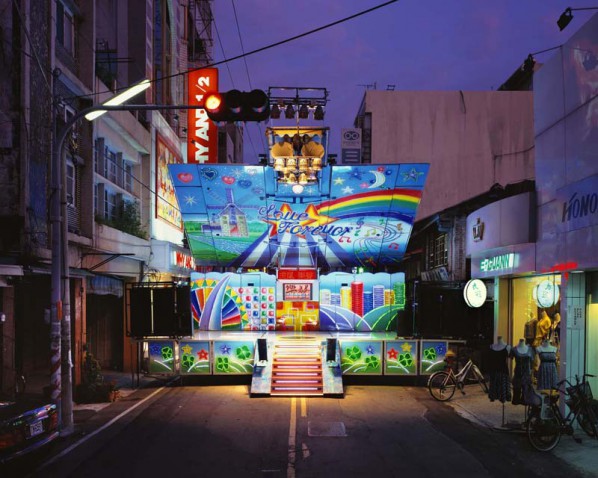
Shen Chaoliang, Stage 02, 2008
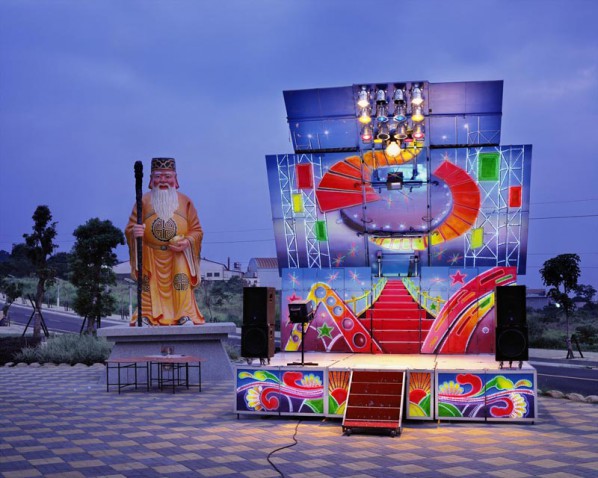
Shen Chaoliang, Stage 04, 2008
Coincidentally, Luo Yongjin’s two series also present the “Facade”. Kaiping Fort House shows the fort houses in the area of overseas Chinese in Kaiping, Guangdong Province; New Residence Hangzhou presents the houses of rich peasants in the suburbs of Hangzhou. These strange buildings in the two places are both built by the economicly successful people. The Kaiping fort houses are created by those who returned home gloriously after working hard abroad for decades during the late Qing dynasty and the period of the republic of China. The architectural style combines various elements of Chinese and Western features; while the residential buildings in Hangzhou are built by the peasants who first got rich after China adopted the reform and opening-up policy in the late 1970s. The architectural styles, especially the details, reflect the aethetic taste of the locals.
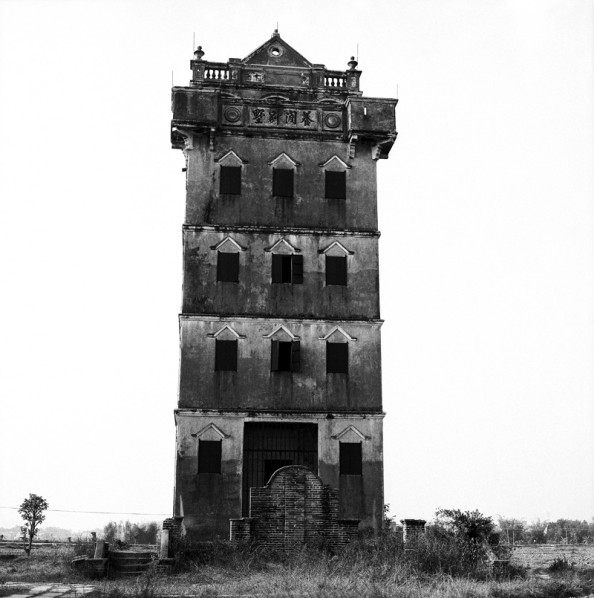
Luo Yongjin, Fort House 02, 2005; Inkjet Print on Fine Art Paper, Edition of 10, 50x50cm
The common experience of the building owners in Kaiping and Hangzhou is that they have gone through the economical change from poor to rich so that they both have psychological demand to show “success” and “wealth” by luxurious “Facade”. Because of the showing-off mind, the buildings inevitably look vulgar with improper pile-up. As a result, such showing-off pile becomes the common aesthetic pursuit for rich people’s buildings in Kaiping and Hangzhou. In a sense, this overlaying pile is the expression of architecture and culture, but presented by the concrete of buildings.
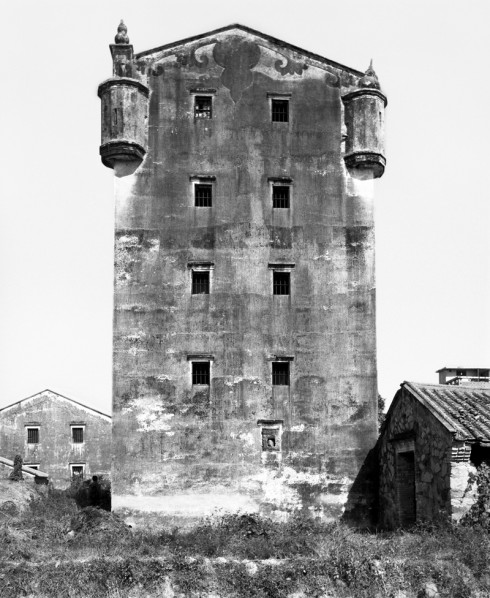
Luo Yongjin, Fort House 18, 2008; Inkjet Print on Fine Art Paper, Edition of 10, 50x60cm
Both Shen Chaoliang and Luo Yongjin happen to deal with their subjects by showing the “Facade” and presenting different objects, which means that they manage to touch the essence of the objects, visually discover and convey the nature under the object’s surface. Meanwhile, they both think of listing and displaying the subjects by relative system in typological way. This idea further points out the possibility of showing essence from the perspective of quantity. On photography, the use of the typology can achieve the goal of revealing the essence through quantity in a visual way and at the same time, correspond to the “collecting” nature of photography. After the photographer’s delicate depiction, these “Facades” fully show their characters through the details and finally become the entryway to help us to enter the “biography” of those who are behind the buildings.
Translation: Fan Chen
About the exhibition
Artists: Luo Yongjin, Shen Chaoliang
Curator: Gu Zheng
Opening: 2014.09.06 / 16:00 - 18:00
Duration: 2014.09.06 - 2014.10.17 / 10:00 - 18:00
Venue: OFOTO Gallery. 2F, Building 13, 50 Moganshan Rd., Shanghai
Courtesy of the artists and OFOTO Gallery.




























